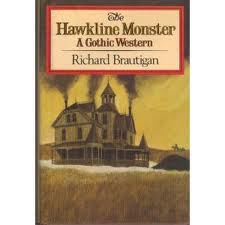Let’s talk about myths, in a broad sense. Wikipedia, that vast conglomeration of human brain tissue and arthritic, keyboard-pecking fingers, has this to say about myths: “A myth is defined as a sacred narrative explaining how the world and humankind came to be in their present form, within the field of folkloristics.” I’m sure there are plenty of scholars that would debate the subtleties of this definition versus others, but I’m not concerned with specifics here. Generally, myths can be said to bridge past and present. Not the past like last month or last year or last century. Rather, an unknowable past, a past so distant and unfathomable that it looms like midnight mountains that cradle giants, like ravens as big and forever as the horizon. Myths take us from point A, a place of which it is impossible to know all the details, to point B, the here and now that is, if not totally understandable, at least substantial and immediately relevant.
But what of the future? Like the past, we cannot grasp it and feel out its shape, whether it stands just beyond the fingertips out of reach or at the end of Infinity Road. For the first few centuries of civilization, most people set their sights no further than the immediate future, and as time wore on looked a bit further ahead—a year, maybe five at the most. This was because technology arose that made even more advances possible, and human beings, endlessly curious and inventive, made it a point to foresee those possibilities and make them reality. But as technology becomes even greater, the potential for the future becomes greater as well. Now at the start of the 21st century, humankind is looking further and further down the road of time, so monumental is the potential inherent in the new science. As human concern catapults from the present decade or century to millennia in the future, we find a mirror image at the end of infinity of that same blackness that shadows our and our universe’s beginnings. Faced again with the unknowable, it becomes necessary and expedient to create a new set of myths, one that connects point B, the present, with point C, the future, whether that future has a finite end or endures ceaselessly.
In his 1952 novel, City, Clifford D. Simak writes myths for the future. Myths that are urgent, not for the future they spell out, but for the implications for humanity: the beauty and danger of man’s aspirations, the decisions man makes when faced with epic prospects. Myths that are haunting, because even if man did endure into infinity, in our secret hearts we know that even this would suggest the ending of something that is essential to life as we know it right now—even if we continue on, we will die to our old homes, loves, and relationships as the universe evolves and forces us further and further away from what we know, with nostalgia alone left to cloud the in-between spaces of stars and thoughts.
Both in structure and in tone, City reminded me of something by Isaac Asimov. Structurally, the novel is more of a short story collection with continuing themes rather than a novel, which is true of Foundation and I, Robot. There are eight tales that each present a time further and further in the future. The tales are told by dogs sitting around campfires in a bizarre and unexpected future, one in which dogs evolve to inherit man’s position on earth. The stories they tell are legend: humanity’s future is the dogs’ past. The canine myth-weavers tell of the Webster family and Jenkins, their loyal robot servant, they tell of the fall of the city as humans abandoned the huddling places for the countryside. They tell of Jenkins's life as he moves down through one generation of Websters to the next, until the Websters and the rest of humanity have retired from Earth to a new weird, weird destiny on Jupiter. They tell of the first dogs learning to talk, of the first experiments that led to ants becoming creatures of great intelligence and malice. They tell of the cobblies, the boogeyman-like beings that travel between parallel worlds. They tell of the ultimate fate of all involved, of humans, robots, dogs, and the industrialized super-ants.
Each story is preceded by commentary that explores the origin of the myths, the ambiguity surrounding them, and the various scholarly approaches to the historicity of them. From these stories and the commentary they are placed in like bubble wrap, arises a narrative of meditation and adventure. Simak deftly melds deep wells of wisdom with a sense of child-like wonder that again brings Asimov to mind. It occurs to me that City is really a story about apocalypse. Maybe so, but the end-of-the-world-as-we-know-it sure is fun when an imagination like Simak’s is the one reporting the myths from the edge of infinity back to us.





